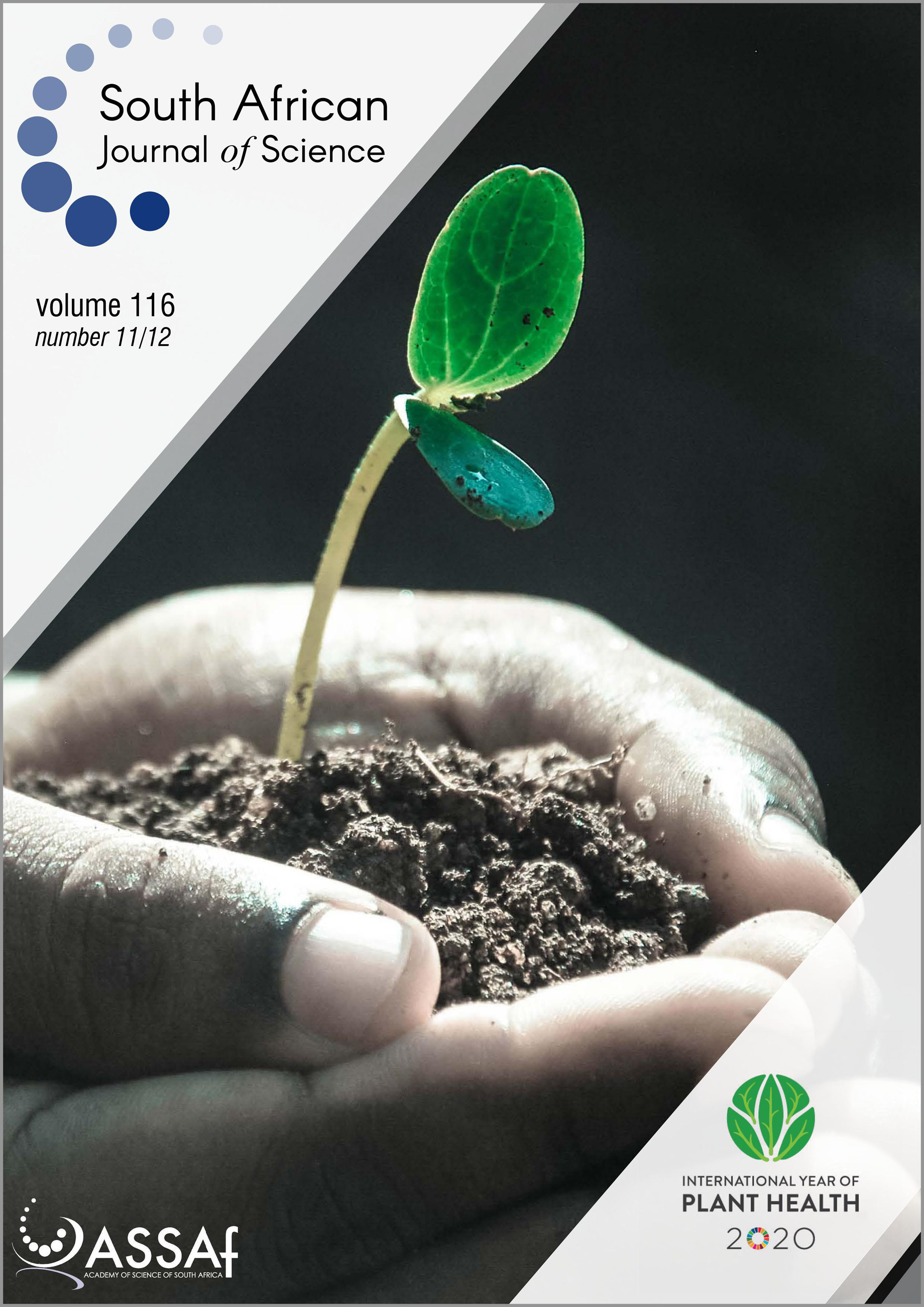Accomplishments in wheat rust research in South Africa
DOI:
https://doi.org/10.17159/sajs.2020/7688Keywords:
Puccinia, resistance, rust, surveillance, wheatAbstract
Rust diseases, although seasonal, have been severe constraints in wheat production in South Africa for almost 300 years. Rust research gained momentum with the institution of annual surveys in the 1980s, followed by race identification, an understanding of rust epidemiology, and eventually a focused collaboration amongst pathologists, breeders and geneticists. Diversity in South African populations of Puccinia triticina, P. graminis f. sp. tritici and P. striiformis f. sp. tritici has been described and isolates are available to accurately phenotype wheat germplasm and study pathogen populations at national, regional and global levels. Sources of resistance have been, and still are, methodically analysed and molecular marker systems were developed to incorporate, stack and verify complex resistance gene combinations in breeding lines and cultivars. Vigilance, capacity, new technologies, collaboration and sustained funding are critical for maintaining and improving the current research impetus for future management of these important diseases.
Significance:
- Rust diseases threaten wheat crops worldwide, including in South Africa.
- Management of rusts includes regular surveillance, pathogen diversity studies, rigorous screening of wheat germplasm, and efficient breeding and selection for resistance.
- Collaboration among plant pathologists, geneticists and breeders has provided momentum in rust research and control in South Africa in recent years.
Published
Issue
Section
License

All articles are published under a Creative Commons Attribution 4.0 International Licence
Copyright is retained by the authors. Readers are welcome to reproduce, share and adapt the content without permission provided the source is attributed.
Disclaimer: The publisher and editors accept no responsibility for statements made by the authors
How to Cite
- Abstract 961
- PDF 975
- EPUB 166
- XML 283
Funding data
-
Biotechnology and Biological Sciences Research Council
Grant numbers BB/F004125/1;BB/J011525/1












.png)